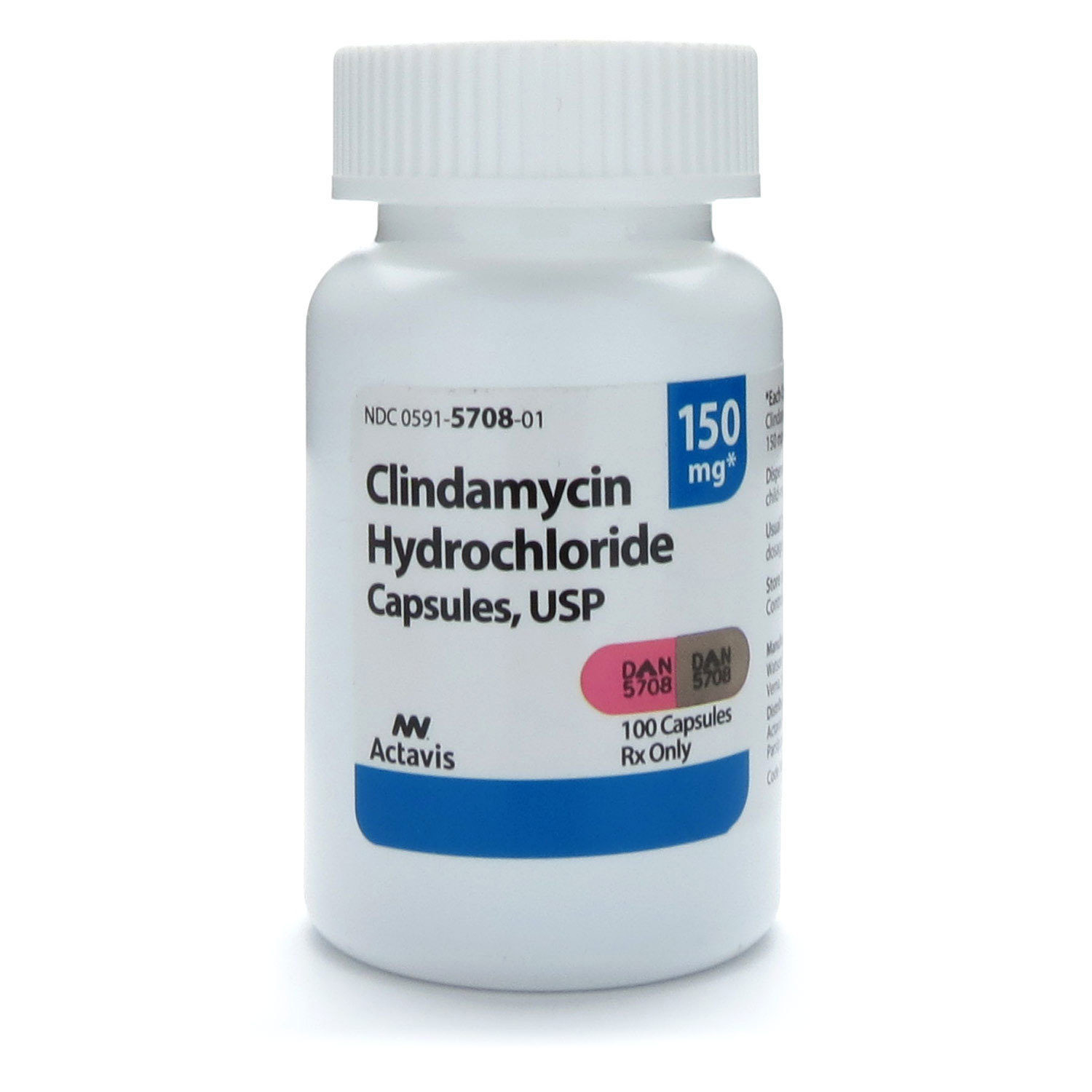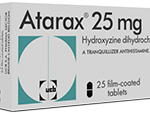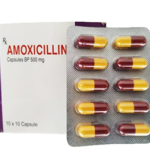
Clindamycin

What is Clindamycin?
Clindamycin is an antibiotic widely used for antibacterial effects. It is used in dermatology, gynecology, general surgery, and veterinary practice. It is available in various forms. It is a bacteriostatic agent that has a detrimental effect on the coccal flora. The treatment course is short, which has a beneficial effect on the body. There is no addiction. Before using it, you should familiarize yourself with all the features of the medication: how many mg to take, how often, what contraindications exist, and possible side effects.
What is Clindamycin used for?
Clindamycin is a versatile antibiotic that has found its application in a variety of clinical scenarios. It is a lincosamide antibiotic, which means it works by stopping the growth of bacteria. This makes it a potent weapon in the arsenal of healthcare providers when they are dealing with infections caused by susceptible bacteria. It is also used in the treatment of acne, where it reduces the number of acne lesions.
Clindamycin is a broad-spectrum drug. The product binds to the 50S subunit of the ribosome, inhibiting protein synthesis in pathogenic agents. The substance is active against coccal flora, microaerophilic, and anaerobic gram-positive cocci. Most bacterial strains of Clostridium perfringens are sensitive to the active ingredient of the drug, but other clostridial species are resistant to its effects. In case of infectious pathologies provoked by Clostridium spp, it is desirable to determine the antibiogram. By the principle of action and antimicrobial spectrum, it is close to lincomycin, especially in relation to bacteroids and does not create anaerobic spores, and is 2-10 times more active.
In addition to its use in treating bacterial infections, Clindamycin is also used as a prophylactic treatment before certain surgeries. This is done to prevent bacterial endocarditis or other infections in patients who are allergic to penicillin or amoxicillin. It is a testament to the versatility of Clindamycin that it can be used in such a wide range of scenarios, from treating skin and soft tissue infections to preventing infections before surgeries.
What does Clindamycin treat?
Clindamycin is a broad-spectrum antibiotic, which means it is effective against a wide range of bacteria. It is particularly effective against Staphylococcus aureus, Streptococcus pneumonia, and certain types of anaerobic bacteria. These bacteria are responsible for a variety of infections, including skin and soft tissue infections, respiratory tract infections, and bone and joint infections.
In addition to its antibacterial properties, Clindamycin also has anti-parasitic activity. It is used in the treatment of certain parasitic diseases, such as malaria and toxoplasmosis. This is because Clindamycin inhibits protein synthesis in the parasite, thereby stopping its growth. This dual action of Clindamycin, both as an antibacterial and anti-parasitic agent, makes it a valuable tool in the treatment of a variety of infections.
Regarding the analogs and generic brands of Clindamycin, here are a couple of examples:
- Dalacin: Dalacin is a brand name for Clindamycin produced by Pfizer. It is used to treat a variety of bacterial infections and is available in several forms, including capsules, lotion, and injections.
- Cleocin: Cleocin is another brand name for Clindamycin, produced by Pfizer. It is also used to treat a variety of bacterial infections and comes in several forms, including capsules, topical solution, and injection.
Please note that while these medications contain the same active ingredient (Clindamycin), their effectiveness may vary depending on the individual patient’s health condition, the specific bacterial infection being treated, and other factors. Always consult with a healthcare provider for the most accurate information.
How to take Clindamycin

Depending on the treated condition, Clindamycin can be taken orally, applied topically, or administered intravenously. The dosage and duration of treatment depend on the type and severity of the infection. It’s important to take this medication exactly as your healthcare provider prescribes, even if your symptoms improve before the course ends.
Pseudomembranous colitis may occur during treatment or 2-3 weeks after completion. 3-15% of such situations have been reported. The disease is characterized by diarrhea, hyperthermia, and abdominal cramps. If the symptoms are mild, it is enough to cancel the therapy and take ion exchange resins – cholestyramine and colestipol.
Each form of release of antibacterial means implies its peculiarities of use.
- Drip intravenously uses the antibiotic for inflammation of the uterine and peritoneal appendages located in the pelvic area every 8 hours by 0.9 g. The drug is used intravenously for at least 4 days and then at least 2 days after improvement of the condition.
- Tablets are administered after clinical effect, every 6 hours at 450 mg until the end of 2-week therapy. Tablets are also indicated for treating mild to moderate infectious and inflammatory pathologies. Adults are prescribed to take them every 6 hours at 150-450 mg for at least 10 days. For the therapy of cervical infections caused by chlamydiae, tablets of 450 mg 4 times a day for 10-14 days are effective.
- When antibiotic-sensitive bacteria provoke inflammation in the vagina, vaginal cream is used. One full applicator is a single dose, which is injected before going to bed. The course of therapy is at least 1 week.
- Gel is used externally for acne, applied to the affected area 2-3 times daily. The therapeutic course lasts for 1 month.
- Suppositories are designed to treat infectious lesions of the urogenital tract and prevention of vaginal inflammation. They are also used in preparation for gynecological surgeries. The course of therapy with suppositories is three days, 1 piece per day.
In severe cases, the loss of fluid, protein, and electrolytes is compensated, and vancomycin or metronidazole is prescribed internally. Drugs that inhibit intestinal peristalsis are forbidden in parallel. When a bacteriostatic is prescribed in high doses, clindamycin blood concentrations should be monitored. Patients with severe hepatic dysfunction need to monitor these organ-hepatic enzymes.
Important fact: The antibiotic is metabolized in the liver, 70-80%, with the formation of active and inactive products. Excretion occurs in 4 days by the kidneys and intestines as active drugs, the rest as inactive metabolites.
Clindamycin side effects
Like all medications, Clindamycin can cause side effects. Common side effects include nausea, vomiting, diarrhea, and rash. Less common but more serious side effects include allergic reactions, blood disorders, and liver problems.
| Common Side Effects | Less Common Side Effects | Rare Side Effects |
| Nausea | Joint pain | Yellowing of the skin or eyes (jaundice) |
| Vomiting | Heartburn | Difficulty swallowing or breathing |
| Upset stomach | White patches in the mouth | Unusual bleeding or bruising |
| Diarrhea | Changes in taste | Decreased urination |
| Mild rash | Sore throat | Severe stomach cramps and painSevere stomach cramps and pain |
The side effects listed do not occur in all patients taking Clindamycin. The most common side effects are in bold, but others may occur. Tell your doctor or pharmacist about any possible side effects.
Clindamycin and alcohol
While Clindamycin does not interact with alcohol, it’s generally recommended to avoid alcohol while taking antibiotics, as alcohol can interfere with the immune system and make it harder for your body to fight off infection.
Interactions

Clindamycin can interact with certain other medications, including erythromycin and neuromuscular blocking agents. It’s important to tell your healthcare provider about all the medications you’re currently taking, including prescription and over-the-counter medications, vitamins, and herbal supplements.
Due to the inherent properties of the drug to block neuromuscular transmission, it can enhance the effect of muscle relaxants (e.g., ether, tubocurarine, pancuronium halide). This may lead to unexpected life-threatening situations during operations. Thus, the drug should be used with caution in patients receiving the above drugs.
Important fact: When concomitant use of the drug, the reliability of the contraceptive effect of oral contraceptives is questionable, therefore, other contraceptive methods should be used additionally during treatment.
Be sure to discuss these and other recommendations with your doctor or pharmacist:
- Tell your doctor if the patient has severe diarrhea during therapy with this medication.
- Taking Clindamycin may reduce the effectiveness of birth control pills and other hormonal methods of contraception. Patients who are sexually active should use other methods of contraception, such as condoms.
- Patients should tell their doctor if they are pregnant or breastfeeding.
- The entire course of the drug must be taken as your doctor or pharmacist recommends.
Contraindications
Clindamycin is contraindicated in individuals with a history of hypersensitivity to lincosamides or those with a history of inflammatory bowel disease or antibiotic-associated colitis. Always check the label of the medicine. Many medicines are similar to one another. Do not take new medicines, especially over-the-counter medicines and supplements, without first talking to your doctor or pharmacist. If you miss a dose, have an allergic reaction, or have an emergency, talk to your doctor or pharmacist. The information is not exhaustive and is not intended to replace medical advice.
Overdose
Overdosing Clindamycin can lead to serious health complications, including severe nausea, vomiting, and diarrhea. If you suspect an overdose, seek medical attention immediately. No interactions with other medications have been observed. Since there are no data on using Clindamycin with other drugs, it is not recommended to combine different drugs. When using the antibiotic systemically, neuromuscular transmission is impaired. The substance may increase the effect of other peripheral myorelaxants.
Clindamycin for dogs
Clindamycin is also used in veterinary medicine to treat various bacterial infections in dogs, including skin, dental, and bone infections. The vet determines the dosage for dogs based on the dog’s weight and the infection’s severity.
Clindamycin for cats
Clindamycin is an antibiotic that is used in cats for treating bacterial infections. It is particularly effective against certain types of bacteria, including those that cause dental and skin diseases and certain types of respiratory and urinary tract infections. Clindamycin works by inhibiting bacterial protein synthesis, thereby stopping the growth of bacteria.





















